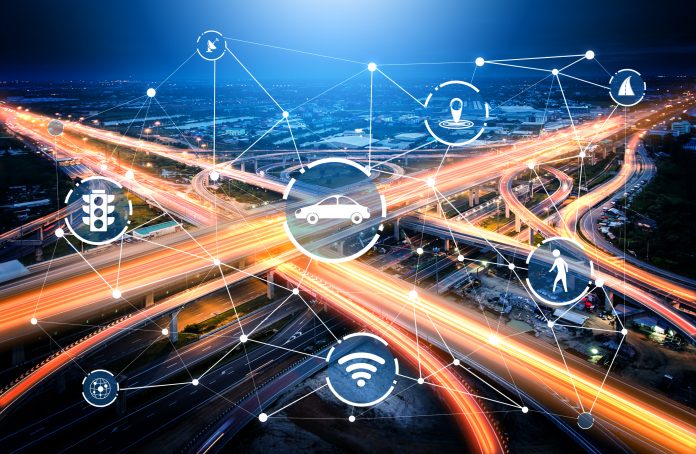Christian M. Theissen and Natalia Filandrianou from White & Case LLP explore the role of Intelligent Transport Systems (ITS) in smart cities & how new mobility concepts will change the dynamics between private & public actors
According to the United Nations, by 2030, the world will reach an urbanisation rate of 60.4%. The development and deployment of technology will play a crucial role in the way that cities of the future capitalise on the use of data – especially in the context of mobility and transport. As smart cities move from an “ownership” model to a “provision of transport services” model, the role of the public actors will, in turn, also change. This will largely be because the roles of the public and private actors involved will increasingly converge.
Currently, there is a division between the “classic” mobility services often offered by the public sector (such as rail, buses, underground) and new mobility services (ride-sharing, ride-hailing, e-scooters, etc.) offered by private companies. However, in smart cities, there will be a higher degree of coexistence and convergence of these service providers. Smart cities will have a central data system in key mobility areas, which will make the way data is organised and processed more efficiently – thus enabling new services.
In this new structure, public actors will often take the central position. They will frequently be at the same time (i) the legal and administrative framework provider, (ii) one of the main service providers, and (iii) the final decision maker about which other actors are allowed to offer their services in the system. While they will of course need private actors as partners, such convergence will in many projects affect the actors’ interaction and competition.
A current example: New German law on autonomous driving
Germany’s law on Highly and Fully Automated Driving from 2017 only covered the “ownership” model, i.e. the private use of such cars. However, a new law that was recently passed by the German parliament has a very different focus: it shifts the emphasis from private ownership of “autonomous cars” to the public operation of “people movers”. As a result, the roles of and the dynamic between the public and private actors will change. In this next step to autonomous driving, fully autonomous shuttles will be able to be used from 2022 for regular operation (in defined operating areas) on public roads, i.e. SAE Level 4. This will be without a physical driver present in the vehicle. Under the new law, control over each autonomous vehicle will be exercised by a remote “technical supervisor”, a person who, in individual cases, can disable or enable driving manoeuvres from outside the vehicle. They are not, however, required to continuously monitor the vehicle that is in autonomous operation.
The German Government’s explanatory note for the draft bill demonstrates the changed focus on shared mobility and many services that will be offered in smart cities. The listed examples include company shuttles for employee transportation, trips between medical care centres and retirement homes, service and supply trips for people with limited mobility, and smaller and larger vehicles in public transport to cover various passenger transport needs in municipalities.
ITS deployment in smart cities
Smart cities are in essence data-driven urban spaces. As a result, the use of ITS forms the foundation of smart city architecture. The deployment of ITS means the integration of advanced information and communication-based technologies into the mobility infrastructure of the city.
From a governance perspective, the collection and processing of mobility data (such as road traffic behaviour, weather conditions, and the use of particular routes) will form the basis of sound decision-making. Given this, a data exchange – either among traffic participants or between traffic participants and city infrastructure – can be used to (i) create a smooth transition from the current model to the “provisions of services” model described above, but also to (ii) create tangible benefits for road users.
The main benefit most often associated with ITS is traffic management. While this is correct, the technology is not limited to more efficient use of the road infrastructure. In addition to better channelling the traffic through the city, ITS can also be used to influence (single) driver behaviour, as well as the traffic behaviour of the general public and monitor the application of road traffic rules.
In essence, this allows ITS applications to increase road traffic safety. For instance, ITS applications can reduce road traffic, accidents, advance safety support and cooperative behaviour between traffic participants (e.g. between car users and cyclists). Additionally, ITS can be deployed by the emergency services to minimise their response time, locate accidents, and reach medical facilities faster.
But safety is not only increased by avoiding encounters of (too) many road users. In combination with “smarter vehicles”, ITS creates a communication channel between a single participant and the infrastructure. It can therefore be used to assist drivers (or autonomous shuttles) to detect, react with sufficient time and avoid dangerous driving conditions.
Closing remarks
Finally, as the push to sustainability and green mobility becomes more acute, the use of ITS can benefit the environment as well through trip and fleet optimisation. For instance, the ability to identify the most efficient route to deliver goods could lead to faster deliveries, but also better management of carbon footprint and general emissions reduction.











